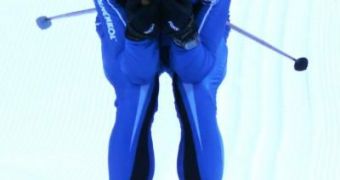Sky competitions are among the most difficult to decide, mostly because most competitors have less than a second separating their individual times. The majority of those competing at the expert level have similar performances when it comes to negotiating corners, picking up speed on straight lines, and enhancing their own aerodynamic coefficients. When all is said and done, the materials that make up their racing gear, skis, helmets, suits, and sticks can mean the difference between winning and losing.
German researchers at the Fraunhofer Institute for Mechanics of Materials IWM, in Freiburg, are at the forefront of research in this field, working continuously to improve the performances of their athletes. They are designing novel materials to be incorporated in the racing gear, which make their representatives faster than others.
The way the ski glides is arguably the most important factor in a competition. There are other influences as well, such as whether the athlete has applied the correct type of wax for the kind of snow he or she is racing on. All of this is tightly related to materials science and mechanics, the Fraunhofer team believes.
“The snow, the ski coating and the wax that is applied all unite to form a single entity. We can't alter the snow, but we can adapt both the wax and the coating to suit particular snow conditions,” the head of the new Microtrobilogy Center, in Karlsruhe, Professor, Dr. Matthias Scherge, reveals. The research group used a special test rig to run simulations of how a single snow crystal interacts with the coatings on the skies. The investigators also analyzed the gliding effects and the friction forces that occur at the interface between the two surfaces, in order to get a detailed view of what is happening at that level.
“It's the first 10 to 15 nanometers of the coating surface that determine the gliding effects,” Scherge reveals. The research team is currently working with industrial partners in the development of novel waxes and coatings, which could be used by professional athletes to shave seconds off their run times. “We've talked with athletes and also with the technicians who wax their skis prior to every competition. It's only with their knowledge and experience that we'll be able to create skis that glide perfectly,” the expert concludes.

 14 DAY TRIAL //
14 DAY TRIAL //